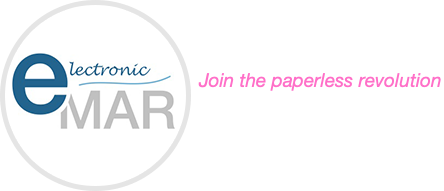In any healthcare or care home setting, the well-being of both residents and staff must remain a top priority. When staff members become overworked, the risk of burnout increases, which can lead to higher error rates, lower morale, and ultimately, a decline in the quality of care.
Managers play a vital role in ensuring workloads remain balanced, but without reliable data, spotting early signs of staff fatigue can be challenging. This is where electronic Medication Administration Record (eMAR) systems offer a powerful advantage.
By tracking and analysing medication administration activity in real time, eMAR gives managers the tools they need to monitor team performance, identify workload imbalances, and intervene before issues escalate. Here, we explore how care home managers can use eMAR data to detect overworked team members and promote a more balanced, efficient working environment.
1. Tracking medication administration load
One of the most direct ways to identify overworked staff is by reviewing how many medication tasks each team member completes during a shift. eMAR systems automatically record each instance of medication administration, including who administered the dose, what medication was given, and the time it occurred.
By analysing this data, managers can identify team members who consistently handle a higher volume of medication rounds compared to their peers. If one staff member is shouldering significantly more tasks, it could be an early warning sign of workload imbalance. Addressing this promptly allows for task redistribution and better staff support.
2. Identifying patterns of frequent overtime
Consistently working beyond scheduled hours is another clear indicator of overwork. Many eMAR systems integrate with scheduling tools to track shift times and highlight when staff are regularly clocking out late.
If the data shows that a particular staff member often stays beyond their scheduled time to complete medication administration, it suggests their workload may be too heavy for the time allocated. Managers can use this insight to adjust shift patterns, provide additional help during peak periods, or review whether task allocation is fair across the team.
3. Monitoring skipped breaks or missed downtime
Staff who are too busy to take scheduled breaks are likely under significant pressure. Some eMAR platforms include features that track break times or allow for time-stamped notes that show when breaks occur. If certain staff members consistently miss or delay their breaks, this is a strong indication that they are struggling to keep up with their workload. Managers can use this data to assess whether staffing levels are adequate, whether particular shifts are overloaded, and whether the distribution of tasks needs to be reviewed.
4. Spotting staff frequently assigned to demanding shifts
Not all shifts carry the same level of demand. Some may involve more complex medication regimens, higher patient acuity, or a larger number of residents to manage. By reviewing shift data alongside medication records, managers can spot if certain individuals are regularly assigned to the most challenging shifts.
This can contribute to long-term fatigue and burnout. With this information, managers can rotate staff more fairly, ensuring no single team member is constantly handling the most stressful or complex cases.
5. Using performance reports for balanced task distribution
eMAR systems offer detailed reports that summarise performance metrics such as the number of medications administered, time spent per task, and any flagged incidents. These reports can help managers pinpoint inconsistencies in workload across the team.
For example, if one team member consistently administers a higher number of medications or takes longer to complete their tasks, this may reflect either overwork or the need for additional training. With this data, managers can make informed decisions to reallocate responsibilities, adjust workflows, or provide targeted support.
6. Reviewing communication and collaboration data
When staff are overburdened, collaboration often suffers. Some eMAR systems include communication logs or task-sharing features that allow managers to see how staff interact and delegate responsibilities.
If the logs show that a staff member rarely receives support from colleagues or is completing most tasks independently, this may suggest poor teamwork or uneven task sharing. Managers can use this insight to encourage better collaboration and ensure a more balanced approach to care delivery.
Supporting a healthy, productive workforce
The use of eMAR data goes beyond improving medication safety—it’s a powerful tool for building healthier, more sustainable staffing practices. By monitoring medication administration patterns, overtime, break adherence, and communication habits, managers can make data-driven decisions to support their teams.
When staff workloads are balanced and support is readily available, job satisfaction improves, mistakes decrease, and care quality remains high. Proactively using eMAR data not only protects staff well-being but also ensures better outcomes for residents and the organisation as a whole.







